Vietnamese ceramics
Ceramics have a long and rich history in Vietnam, dating back to the prehistoric period when humans first settled in the region. Over the centuries, Vietnamese ceramics have developed into a unique and diverse art form, reflecting the country’s cultural and artistic heritage.
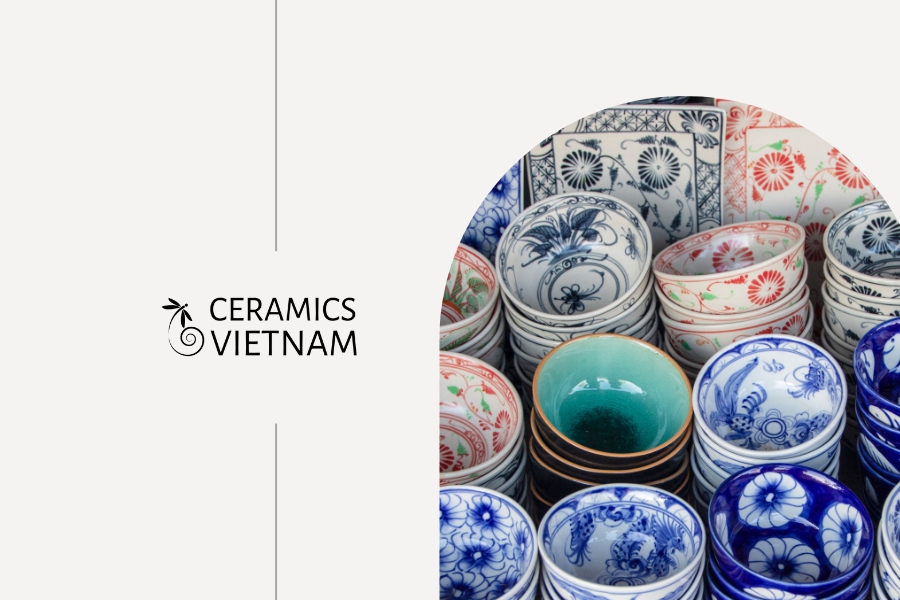
Vietnamese ceramics
Vietnamese ceramics are known for their intricate designs, vibrant colors, and high level of craftsmanship. They have been used for a variety of purposes, including household items, religious artifacts, and works of art. From simple earthenware pots to ornate porcelain plates, Vietnamese ceramics have evolved to meet the changing needs and tastes of the Vietnamese people.
The earliest known ceramics in Vietnam date back to the Neolithic period, around 4,000 BCE. These early ceramics were simple earthenware pots, made by hand and fired in open pits. They were used for cooking, storage, and as grave goods. Over time, as the people of Vietnam developed new techniques and technologies, their ceramics became more sophisticated and diverse.
The Neolithic period, also known as the New Stone Age, was a significant turning point in human history. It marked the beginning of the transition from a hunting and gathering lifestyle to a settled way of life that included agriculture, animal domestication, and the development of pottery. This period began around 10,000 BC and lasted until about 4,500 BC, with variations in different parts of the world.
The Neolithic period saw major changes in human societies. The development of agriculture allowed for more reliable food production, leading to the establishment of permanent settlements and the growth of population densities. With this came the formation of more complex social structures, including the emergence of hierarchies and specialized roles such as artisans, traders, and religious leaders.
One of the key developments of the Neolithic period was the domestication of plants and animals. Humans began to selectively breed plants and animals for desirable traits, leading to increased food production and the development of more stable food supplies. This allowed for larger communities to form and for people to settle in one place for longer periods of time.
The development of pottery was another key development of the Neolithic period. Prior to this, tools and containers were made from stone, bone, and wood. However, with the invention of pottery, people were able to make containers that were more durable and less likely to break. Pottery also allowed for the storage of food and water, and the development of new cooking techniques.
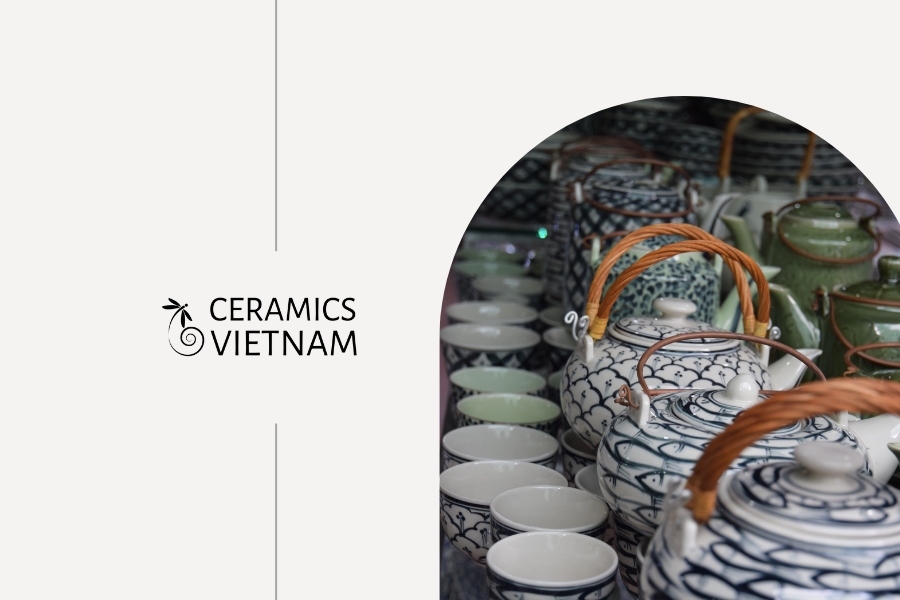
Vietnamese Ceramics
The Neolithic period saw the emergence of early civilizations in different parts of the world. In the Middle East, the civilization of Sumer developed in the Tigris and Euphrates river valleys. In China, the Yangshao and Longshan cultures emerged, while in Europe, the Megalithic culture developed in Western Europe. These civilizations were characterized by the development of agriculture, the use of metal tools, and the emergence of social hierarchies.
The Neolithic period was also a time of significant artistic and cultural development. Artifacts from this period, such as pottery, stone carvings, and cave paintings, provide insight into the beliefs and practices of early human societies. Many of these artifacts depict animals, suggesting that early humans held a close relationship with the natural world.
Overall, the Neolithic period was a pivotal time in human history, marked by significant changes in social organization, technology, and culture. The innovations of this period laid the foundation for the development of later civilizations and shaped the course of human history.
One of the most significant periods in the history of Vietnamese ceramics was during the 15th century, when the country was ruled by the Ming Dynasty of China. During this time, Chinese artisans were brought to Vietnam to produce ceramics for the royal court. These ceramics, known as “Vietnamese blue and white,” were highly prized for their beauty and craftsmanship, and they had a profound influence on the development of Vietnamese ceramics.
During the 18th and 19th centuries, Vietnamese ceramics underwent another transformation, as European traders brought new techniques and designs to the region. This period, known as the “transitional period,” saw the emergence of new styles and forms, including colorful enamel ware and delicate porcelain tea sets.
Today, Vietnamese ceramics are produced in a wide range of styles and forms, from traditional earthenware pots to modern, abstract sculptures. Many artisans continue to use traditional techniques, such as hand-building and wood firing, while others incorporate modern technologies like electric kilns and computer-aided design.
One of the most famous centers of ceramic production in Vietnam is the village of Bat Trang, located just outside of Hanoi. Bat Trang has been producing ceramics since the 14th century, and it is renowned for its high-quality porcelain and pottery. Other notable centers of ceramic production include the village of Phu Lang, known for its earthenware pots, and the city of Hue, famous for its colorful enamel ware.
Bat Trang is a well-known ceramic village located on the banks of the Red River, about 13 kilometers from the center of Hanoi, Vietnam. The village has a long history of ceramic production, dating back to the 14th century during the Ly dynasty. Since then, Bat Trang has developed into one of the most famous ceramic villages in Vietnam, attracting both local and international visitors who come to appreciate and purchase the high-quality products.
The clay in Bat Trang is believed to be sourced from nearby mountains and rivers, providing the perfect material for creating beautiful ceramics. The village’s location on the riverbank allowed for easy transportation of the finished products to other areas of the country.
Bat Trang ceramics are famous for their unique and intricate designs, which have been influenced by both traditional Vietnamese and Chinese styles. The artisans in Bat Trang use techniques that have been passed down from generation to generation, ensuring that the village’s rich ceramic heritage is preserved.

Phu Lang village (Que Vo, Bac Ninh)
One of the most popular products from Bat Trang is the traditional blue and white ceramics, which are made using cobalt oxide as a colorant. This technique was introduced to the village during the 15th century by Chinese traders, and it quickly became a popular style among the artisans. Today, Bat Trang’s blue and white ceramics are highly sought after by collectors and tourists alike.
In addition to blue and white ceramics, Bat Trang produces a wide range of other products, including vases, bowls, cups, plates, and decorative objects. The village’s artisans are skilled in a variety of techniques, including hand-building, wheel-throwing, glazing, and firing. Many of the products are decorated with intricate designs that reflect the culture and traditions of Vietnam.
Visitors to Bat Trang have the opportunity to see the artisans at work, as many of the workshops are open to the public. Watching the artisans create their beautiful ceramics is a fascinating experience that gives visitors a glimpse into the village’s rich history and cultural heritage.
In recent years, Bat Trang has faced challenges due to competition from cheap imitations and mass-produced ceramics. To combat this, the village has focused on producing high-quality products that showcase its unique heritage and traditions. The village has also embraced modern technology, using digital marketing and online sales to reach a wider audience.
Today, Bat Trang continues to be a popular destination for those interested in ceramics and traditional Vietnamese culture. The village’s rich history, skilled artisans, and unique products make it a must-visit destination for anyone traveling to Hanoi.
Vietnamese ceramics continue to be an important part of the country’s cultural and artistic heritage. They are used for everything from daily use in households to decoration in hotels, restaurants, and other public spaces. With their rich history and diverse styles, Vietnamese ceramics are a testament to the skill and creativity of the country’s artisans.
Bàu Trúc: The oldest extant pottery village in Vietnam, and possibly Southeast Asia
Bàu Trúc, also known as Palei Hamu Craok in the Cham language, is a small village located in Phước Dân town, Ninh Thuận province, Central Vietnam. The village is famous for its production of traditional pottery, including agricultural tools, cookware, and toys, attracting numerous tourists every year. Despite its popularity, little is known about the traditional production methods, local understanding of production genres, and belief systems that have been integral to the process for hundreds of years.
Bàu Trúc is easily accessible by a short motorcycle ride from Phan Rang-Thap Cham city in Central Vietnam, located just 9 km south off National Highway 1A. The village is divided into two quarters, the 7th and 12th, with nearly 3000 people residing in the former, considered a small town, and 2000 people in the latter. The population is primarily ethnic Cham, with 94% in the 7th Quarter and 45% in the 12th Quarter, while the remainder is ethnic Vietnamese.
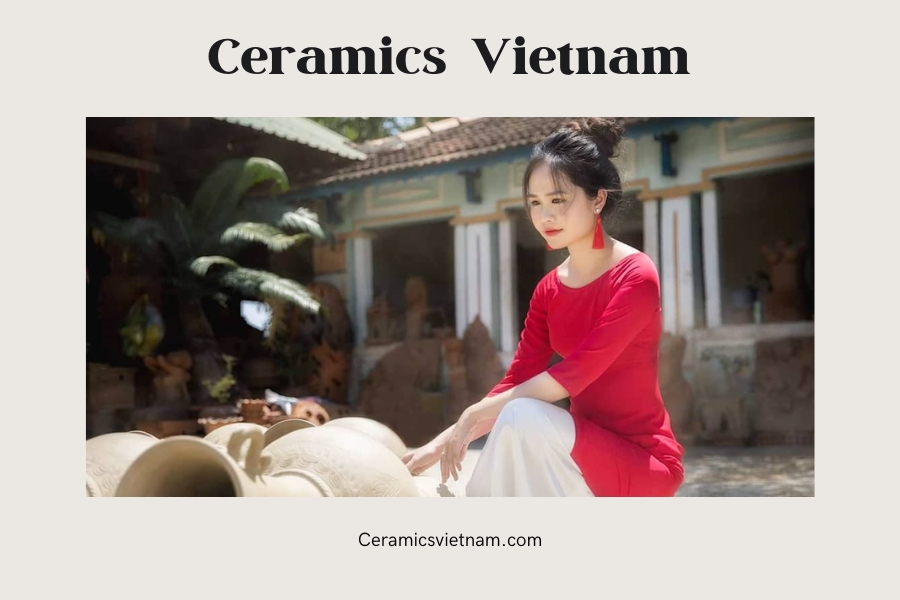
Bau Truc village (Binh Thuan)
The village’s name is derived from the Cham language, with “palei” describing small towns and villages, “hamu” referring to rice paddy land, and “craok” indicating a protrusion of land near the conflux of two streams. The village’s history dates back to before the 12th century and possibly even earlier. During the reign of Minh Mang, the Vietnamese annexed the area and renamed it “Vĩnh Thuận,” still used by Vietnamese in the region. However, a massive flood in 1964 forced the people of Palei Hamu Craok to relocate to a nearby area adjacent to Danaw Panrang Lake. The local Vietnamese named the new settlement “Bàu Trúc,” meaning “Bamboo Lake,” due to the area’s abundance of bamboo trees.
The village shares many characteristics with other Cham settlements in Ninh Thuận province, with few large old-growth trees but ample rice fields thanks to irrigation networks. The settlements are associated with matrilocalism, with families living close to one another belonging to the same kinship network. After death, remains are interred in an old grave site, known as a “kut.” Currently, there are 13 clan groups, each with 50 to 60 families. Families own land collectively, sharing rights and obligations and are responsible for maintaining ancestral grave sites and shrines associated with their clan. Houses follow customary regulations regarding positioning, with each family complex consisting of several structures, including a customary house, one or two two-story houses, a guest house, one or two one-story, horizontal houses, and a kitchen. However, since 2005, traditionally oriented housing developments have been disappearing, with new houses adopting Vietnamese adaptations of European modernist architecture.
Ninh Thuận is a coastal province located in the southern part of Vietnam. It is bordered by Bình Thuận Province to the north, Khánh Hòa Province to the south, Lâm Đồng Province to the west, and the South China Sea to the east. The province has a total land area of 3,365.8 square kilometers and a population of approximately 580,000 people.
The province is known for its beautiful beaches, sand dunes, and traditional Cham culture. The Cham people have inhabited this area for thousands of years and have left behind a rich cultural heritage that is still evident in the province today. The Cham people are known for their unique architecture, music, dance, and pottery.
One of the most famous Cham sites in Ninh Thuận is the Po Klong Garai Cham Temple. The temple was built in the 13th century and is dedicated to the god Po Klong Garai. The temple is a stunning example of Cham architecture and is a testament to the Cham people’s rich cultural heritage.
Another important Cham site in Ninh Thuận is the My Nghiep Cham Tower. The tower was built in the 9th century and is one of the oldest Cham towers in Vietnam. The tower is a symbol of the Cham people’s spiritual beliefs and their sophisticated architectural skills.
Apart from its cultural heritage, Ninh Thuận is also famous for its natural beauty. The province has some of the most beautiful beaches in Vietnam, such as Ninh Chu Beach and Binh Tien Beach. These beaches offer visitors a chance to relax, swim, and enjoy the beautiful scenery.
Ninh Thuận is also known for its sand dunes, which are a popular tourist attraction. The dunes are located in the coastal town of Mũi Dinh and are a popular spot for sandboarding and taking photos.
In addition to its natural beauty and cultural heritage, Ninh Thuận is also an important agricultural center in Vietnam. The province is known for its grapes, which are used to make wine and raisins. The grapes are grown in the hills surrounding the city of Phan Rang-Tháp Chàm and are a popular local specialty.
Overall, Ninh Thuận is a province that is rich in culture, history, and natural beauty. Its Cham heritage, beautiful beaches, sand dunes, and agricultural products make it a unique and fascinating destination for visitors to Vietnam.
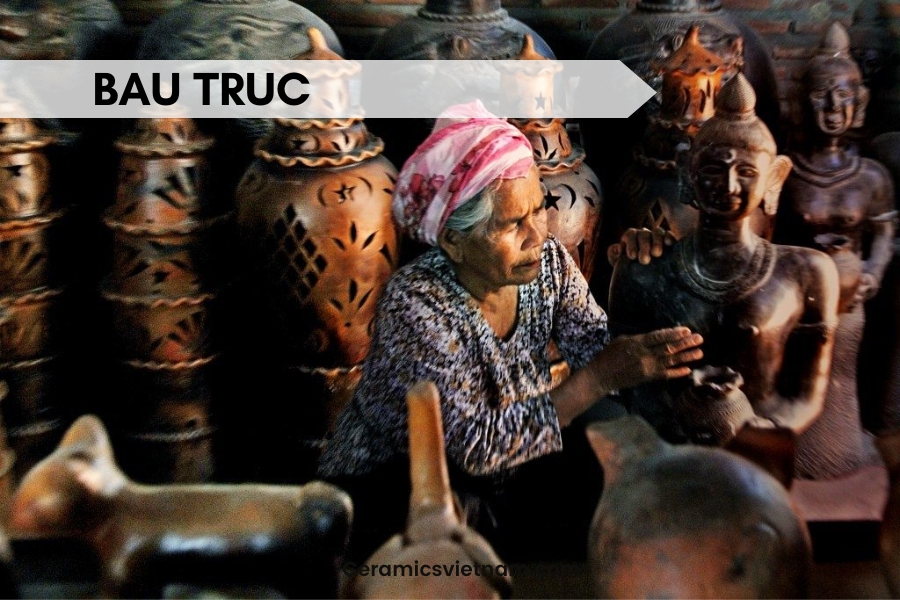
Bàu Trúc: The oldest extant pottery village in Vietnam, and possibly Southeast Asia
Spirit of Place: Divine Inspiration for Pottery
Contemporary residents of Palei Hamu Craok have a common understanding of their past, despite its historical obscurity. Many trace their lineages to an ancestral deity named Po Klaong Can. Po Klaong Can was a mandarin of Po Klaong Garai, a king of the Champa civilization who ruled the area from 1151-1205 CE. Po Klaong Can helped the villagers by leading them to a new settlement, Hamu Craok, and showing them a clay pit where he taught them about pottery. In gratitude, the villagers deified him as ‘the God of Pottery’ and built a temple in his honor, known as Danaok Po Klaong Can. Initially, the temple was located in the center of the village field, tambok min. However, in 1967, it was relocated from the old village, palei klak, to a new location 2 km west of the new settlement created in 1964. In 2014, the new temple was damaged by weather, and the community raised funds to reconstruct it. The current building, supported by three trusses, spans two rooms and features a main temple door facing east. The inner sanctum houses the main shrine, featuring a stone linga-yoni altar with the face of Po Klaong Can on the linga aspect. A smaller stone altar to the left of the main shrine features Po Klaong Can’s wife, Nai Hali Halang Tabang Mâh (also known as ‘Po Nai’). On the right side of the temple’s entrance, a small nandin statue representing the steed of Shiva can be found. These statues were repurposed from a 9th-century temple that was burned by a Jawa army in nearby Phước Hữu commune. However, the statues only came into the possession of current residents in 1967.

Photo by Inra Jaya, all rights reserved. Artisans work the clay predominantly by hand. They use only the most simple tools.
The Cham people are an ethnic minority group in Vietnam with a rich cultural heritage and a fascinating history. The Cham people are believed to be descendants of the Champa kingdom, a powerful maritime empire that existed in Southeast Asia from the 7th to the 18th century. Today, the Cham people are concentrated mainly in the central coastal provinces of Vietnam, particularly in Ninh Thuan and Binh Thuan.
The Cham people have a unique culture and language that sets them apart from the ethnic majority in Vietnam. The Cham language is a Malayo-Polynesian language that is closely related to Malay and Indonesian. The Cham people are also known for their distinctive music, dance, and art, particularly their intricate pottery and weaving.
One of the most notable aspects of Cham culture is their religion. The Cham people are predominantly Hindu, with a small minority practicing Islam. The Cham people’s religion is a blend of Hinduism and indigenous animist beliefs, with elements of Buddhism and Islam also present. Cham temples and shrines can be found throughout central Vietnam, many of which are still in use today.
The Cham people have a long and complex history in Vietnam. The Champa kingdom was one of the most powerful and influential in Southeast Asia, with a sophisticated system of government, trade, and culture. The Champa kingdom was a maritime power, and the Cham people were known for their seafaring skills and trading prowess. The Champa kingdom was eventually conquered by the Vietnamese in the 18th century, and the Cham people were assimilated into Vietnamese culture.
Despite their assimilation, the Cham people have managed to preserve much of their unique cultural heritage. The Cham people’s art, music, and dance continue to be an important part of their identity, and Cham festivals and ceremonies are still celebrated throughout central Vietnam.
One of the most famous Cham cultural sites in Vietnam is the Po Nagar Cham Towers in Nha Trang. The Po Nagar Cham Towers are a group of ancient Hindu temples that date back to the 7th century. The towers are an important pilgrimage site for the Cham people and are also a popular tourist attraction.
Another important aspect of Cham culture is their pottery. The Cham people are renowned for their intricate and beautiful pottery, which is characterized by its unique shapes and designs. One of the most famous Cham pottery villages in Vietnam is Bau Truc in Ninh Thuan province, where generations of Cham potters have practiced their craft.
In recent years, there has been a renewed interest in Cham culture and heritage. The Vietnamese government has launched a number of initiatives to preserve and promote Cham culture, including the establishment of Cham cultural centers and the funding of archaeological research into Cham history and civilization.
The Cham people are an important and fascinating ethnic minority group in Vietnam. Their unique culture and history have left an indelible mark on Vietnamese society, and their legacy continues to be celebrated and appreciated today.

Spirit of Place: Divine Inspiration for Pottery
Po Klaong Can’s Method: Perfection Through Practice
The villagers may hold the belief that Po Klaong Can, who lived in the 12th and 13th century, was a historical figure that became a god and taught them pottery. However, research conducted by art historians, historians, anthropologists, and archaeologists reveals that many features of the pottery methods used at Palei Hamu Craok can be traced back to earlier Champa techniques and even the pre-Champa Sa Huỳnh culture, which existed around 3000 BP. Similar production processes, vessel types, and outdoor pottery firing methods can also be found at Sa Huỳnh sites. Consequently, some scholars suggest that Palei Hamu Craok’s methods are among the oldest in Southeast Asia. Although this assertion is yet to be confirmed through comparative work, it can be argued that Palei Hamu Craok is presently the oldest surviving pottery production center in Vietnam.
Despite the simplicity of the required materials for making Palei Hamu Craok pottery, older production sites have abandoned traditional methods. The necessary materials for firing the pottery include clay, sand, firewood, straw, and rice husks. The sand used in the process is mixed with clay collected from the nearby Quao River, which contains lithium particles collected during the flooding season from nearby rivers and streams. The particular clay source has an exceptional natural characteristic of high adhesion and an inexhaustible supply. The residents take the clay from the pit in limited quantities, allowing it to regenerate every six months with natural flooding cycles. To retrieve the clay, potters dig 0.5-0.7m deep holes across an area of 1m2, after which they fill the hole with soil, and rice can be planted on the spot. The clay pit will yield new clay in another six months.
Once the clay is collected, it is dried and soaked in water for about 12 hours in a hole. The clay is then mixed with sand at a 1:1 ratio, and the potter kneads the clay with their feet and hands until it reaches a plastic state. Minimalist hand-tools, including a big bamboo loop for curving the glossy raw clay, a smaller bamboo loop for thinning the clay body, a knife for cutting and etching decorative patterns, a stick for poking holes in the clay, a small cloth for smoothing the surface of the wet clay, and a comb for creating wave patterns, are used to work the clay through four stages.
In the first stage, the potter creates the primary form by shaping the clay into a “pumpkin” and setting it on a clay “anvil”. Starting at the base of the pumpkin, the potter uses their hands to create the basic shape of the ceramic piece (20-30cm high). The potter then expands the size of the shape, connecting the base and working the sides upwards. The kagoh is used to brush around the body to smooth the surface, including the mouth, and rub out fingerprints, before the body is rubbed with the cloth to make the clay glossy.
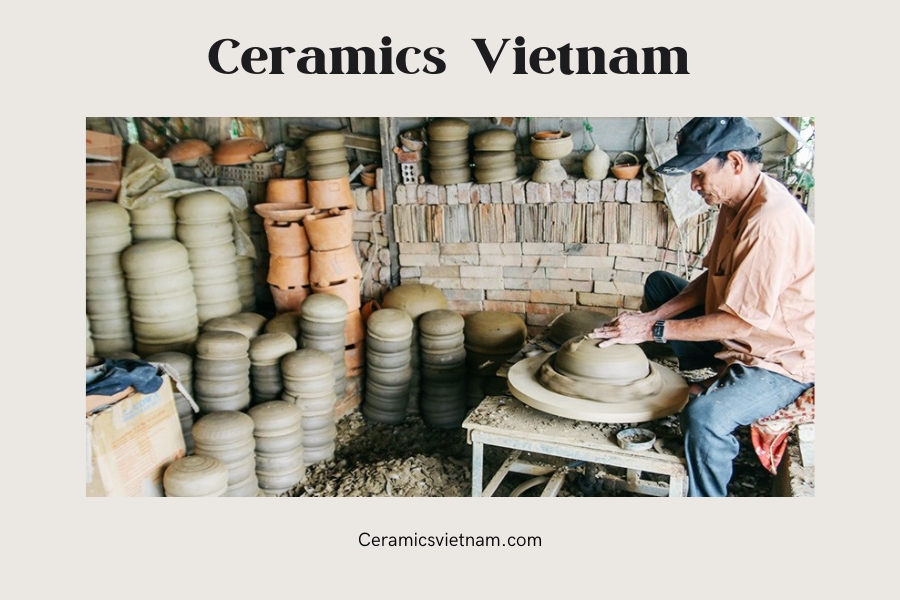
Thanh Ha village (Hoi An, Quang Nam)
In the second stage, the potter rubs the piece smooth, wrapping the tanaik around their hand and gently touching it to water before rolling it across the mouth of the piece to create a bell-shaped or cupped mouth, with a standing rib, around the whole outside of the lip of the mouth of the piece.
In the third stage, decorative motifs are added. The potter may use a piece of cloth, seashells, plant flowers, or even leaves to create patterned motifs, with traditional motifs including jagged, sharp lines, waves, patterns of vegetation, and numerous sea motifs created with shells. Due to market demands, these patterns have become more sophisticated over the past decade, with human and animal motifs following classical Champa art styles increasingly being added to the repertoire.
In the final stage, the pieces are left to dry on a forming platform before being brought to a shady place to prevent cracking. When the pieces are completely dry, the potter shaves the bottom of the ceramic from the platform using a tanuh, and the firing stage can begin.
Cham pottery is fired exclusively outside, without the use of kilns. To fire the pottery, potters collect wood from the forest during the dry season, along with straw and rice husks from rice fields after harvest. The pots are stacked according to size, forming a large cube structure with the largest items at the bottom and the smallest at the top. The pieces are then surrounded by slabs of dry wood (20-30cm high) and covered with a combination of straw and husks. The combination of husks and straw ensures that the fire will ignite quickly, burn hot, and burn consistently for about two to three hours.
After firing, a natural plant-based glaze can be added to the pieces for extra decoration if desired. The production process is a form of traditional pottery that is timeless, as potters use sophisticated techniques, but they are all done by hand. From clay preparation and gathering to shaping the pieces and firing, the potter works entirely with their own hands, only using simple hand-tools. A Palei Hamu Craok potter’s skills must be finely tuned through years of training to follow the stages of production accurately day in and day out, from one year to the next.

Ceramics in Vietnam
Style & form: The contemporary art
The pottery production at Palei Hamu Craok can be divided into five broad categories based on the style and function of the pieces. The first category includes large and small pots, used mainly for cooking or storing drinking water. These pots have round bottoms, small mouths, and large round bodies, with an average height of 20cm and a diameter of 15cm near the base. The walls of these pots are approximately 0.8cm thick. The second category, called klait or glah, comprises pots with a full bell mouth, short neck, drooping shoulders, and a full middle body with a smaller round bottom. These pots are commonly used for cooking and are 20cm high, with a mouth diameter of 10cm and walls around 1cm thick.
The third category includes pots used to store various substances such as water, salt, and rice. These pots are slightly rounded at the bottom with a cupped standing mouth, standing neck, sloping shoulders, and round body. They are generally 40cm high, with a mouth diameter of 15cm and walls around 1.2cm thick. The fourth category comprises ceramics that have straps attached and two to three legs, and are mostly used as portable stoves or braziers on which cooking pots can be placed for heating. These pots have full cupped mouths and flat bottoms and are generally shallow. Water storage pots also fall into this category.
Finally, the last category consists of purely decorative pieces and toys, commonly taking the form of animals or including animal motifs such as water buffalo, cattle, humans, and trumpet-like instruments.
Over the past two decades, Palei Hamu Craok’s pottery production has undergone significant changes. Historically, the most produced pots were categorized into the first through third categories, which included pots for cooking and storing food and water. However, in the late 1990s, to meet the rising demand for pottery production, more men began to turn towards the traditionally female-dominated profession of pottery making.

Ceramics in Vietnam
Furthermore, there has been a shift towards producing more decorative pieces in the fifth category. These pieces include flower vases, variations of water pots, light boxes, and statues of classical deities of Champa, such as Shiva and Nandin, Brahma, Vishnu, and Apsara dancers. These new designs represent the desire to establish niche markets for Palei Hamu Craok ceramics, but also represent the revivalist interests of the artisans themselves. The result is new designs that are both creative and evocative, mostly produced by a younger generation of artisans.
This shift towards more decorative pieces has blended the fifth category with the more traditional pots, which are also growing increasingly ornate. The popularity of these new designs has grown to such an extent that they are now used to furnish homes, cafes, restaurants, hotels, and seaside resorts across urban areas in southern Vietnam.
In fact, by the 2010s, somewhat regular shipments of Palei Hamu Craok pots were being sent internationally. The centuries-old process of traditional pottery, inspired by the god Po Klaong Can, represents an intangible heritage of the global community. The revival of interest in classical Champa art styles, coupled with the desire to establish niche markets, has led to a thriving pottery industry in Palei Hamu Craok.
As the pottery industry continues to evolve, it will be interesting to see how Palei Hamu Craok’s artisans incorporate new design elements into their traditional pottery-making techniques. The global popularity of Palei Hamu Craok ceramics is a testament to the skill and creativity of these artisans, as well as the enduring appeal of traditional crafts.
- Trương Văn Món (Sakaya), Faculty of Anthropology, University of Social Sciences & Humanities – Vietnam National University, Ho Chi Minh City. He is author of numerous books on Malayo-Polynesian cultures and Cham culture including The Myths and Legends of the Cham People (Tri Thuc Press, 2018).
- William B. Noseworthy, Department of History, McNeese State University – University of Louisiana System, Lake Charles. His is author of numerous articles and book chapters on Southeast Asian history. He is currently working on a new book, Gods of the Soil. He was co-author with Sakaya et al. on the Cham-Vietnamese-English Dictionary (Tri Thuc Press, 2014).













Leave a reply